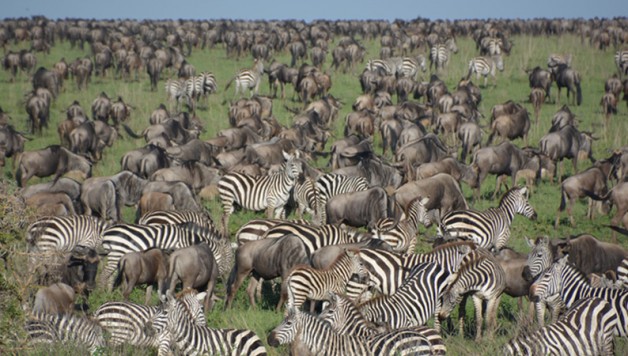The Great Migration and When You Should Visit
There are many reasons why you’d book a safari in the modern age, particularly as there’s now a range of packages on offer across a plethora of operators each promising great accommodation, easy travel and a once-in-a lifetime experience
One of the most popular African safari getaways for couples, families or even solo nomads is a vacation that encompasses witnessing the Great Migration and fortunately Tanzania Odyssey have a range of the best Great Migration holidays that cater for all types of traveller.
But what is The Great Migration? And why is it so popular?
In brief terms, The Great Migration sees around 1.5 million wildebeest, 200,000 zebra and a host of other animals travel across the African continent in search of lush grazing lands.
We’ll explore this further below, while asking when’s the best time to experience this phenomenon.
What is the Great Migration?
Ultimately, the Great Migration is like nothing else on earth. As you can imagine, the sight of nearly two million animals making their way across one of the world’s most natural environments is one to behold, as these creatures risk life and limb in the quest for wetlands.
The Great Migration takes place throughout the year, and it essentially refers to the journey made by animals during the dry season on the East African savanna.
The herds move around 2,000 kilometres on their travels, as they journey from the southern expanse of the Serengeti and the Ngorongoro Crater and over the borders of Kenya’s Maasai Mara National Reserve.
From here, they make their way back down to the southern Serengeti, in the further search for adequate food and water.
The term migration hints at a simple and linear journey, of course, but this movement is far more complex. In fact, the Great Migration represents a clockwise cycle of motion between Tanzania and Kenya, with the animals traversing the African plains according to seasonal changes and a paucity of food.
When’s the Best Time to Visit?
You can see the Great Migration at any time of the year when visiting Africa, but there are certain periods that offer far greater value than others.
You’ll also need to choose the right destination when booking your safari, as the Migration will pass through different locations and various parts of the year.
In January, for example, the herds are at the southern plains of the Serengeti, and during this time the entire wildebeest herd will give birth to around 300,000 calves within a period of just two to three weeks.
During the spring, the wildebeest herd will move from north to west, to the central reaches of the Serengeti near Lake Victoria. April sees something of a rut, however, as at this time the wildebeest tend to mate after quite complex territorial rituals.
Overall, it’s the summer and the early autumn that represent the best time to see the Great Migration, as this period ushers in the so-called ‘dry season’. At this time, the weather is warm and stable, while the climate leads to an abundance of animals as they congregate around sources of food water.
The sparse vegetation and dried-up waterways guarantee that animals will continue to move north in the search of food and drink, creating a visual spectacle that represents a once-in-a-lifetime opportunity!













